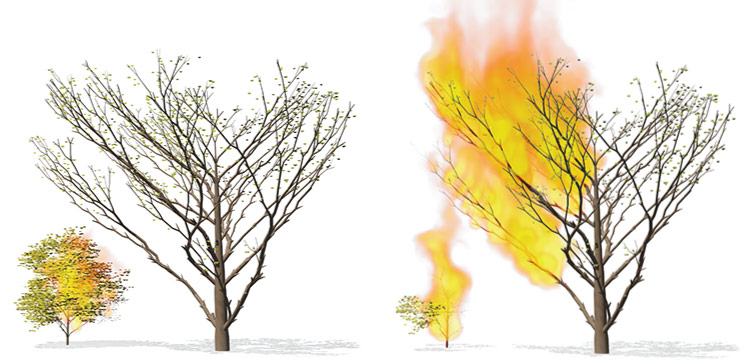Computer simulations can predict the spread of wildfires through sections of a real forest using a realistic yet computationally efficient new method to model the combustion of individual trees. The model, which accurately captures wildfire behavior at forest scale, was created by KAUST researchers and their international collaborators.
“Our work can help to make real forest fires more predictable by simulating potential fire scenarios with real forestry data,” says Torsten Hädrich, a Ph.D. student in Dominik Michels’ group. “We are also able to simulate how firebreaks in forests can be used to contain fire spread,” he adds.

Climate change simulations have long predicted a global rise in the prevalence and intensity of wildfires. “We titled our research paper ‘Fire in Paradise’ in reference to the northern Californian town of Paradise that was devastated by a wildfire in November 2018, resulting in more than 80 fatalities,” says Michels, who led the research.
Accurate computational simulations could improve our understanding and management of wildfire behavior. “The main challenge is to capture the complex dynamics involved,” Hädrich explains. The simulation must include a model for tree combustion and a fluid dynamics component for the simulation of fire while accounting for environmental variations, such as tree density, terrain and wind.
Previous forest-scale fire simulations have represented trees as simple cones or cylinders, but this extreme simplification of forest structure reduces the accuracy of the simulation. Hädrich, Michels and their collaborators developed a method to model trees as collections of branch-like modules. “Our module-based representation provides a way to control the level of detail for the simulation,” Hädrich says.
Read the full article

